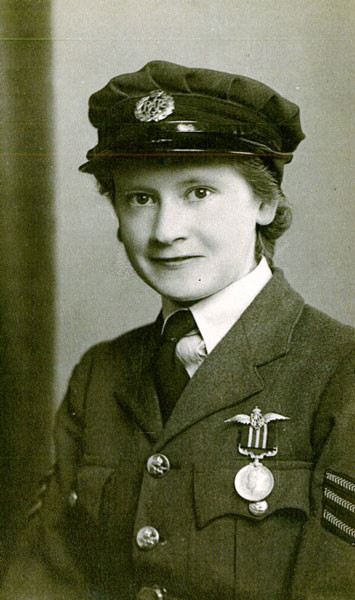
This is a legacy story from an earlier version of our website. It may contain some formatting issues and broken links.
To celebrate International Women’s Day 2021, we are finishing our series of posts about 100 Pioneering Women of Sussex with a tribute to the little known story of Avis Joan Hearn, an upholsterer and aircraftswoman during the Second World War. Written by Lucia Wallbank, assistant curator at the RAF Museum.
Close to Arundel in West Sussex is the site of a military installation with an important role in RAF history. Most of the surrounding land has been given over to agricultural use and not much remains to reveal its key role in the south coast’s line of defences during the Second World War. It was closed in 1955, its towering pylons demolished.
The story begins with Avis Joan Hearn, an upholsterer from the market town of Amersham in Buckinghamshire.

Acting Corporal Avis Joan Hearn wearing her Military Medal © RAF Museum X004-8476/001
In March 1939, she joined the 39th (Buckinghamshire) Company of the Auxiliary Territorial Service (ATS). When the Women’s Auxiliary Air Force (WAAF) was formed on 28 June, RAF ATS companies were absorbed into it. Standing at only 4ft 10 ½ inches tall, Avis was shorter than the height requirement but was accepted. The WAAF were mobilised on 28 August. On 3 September, Britain declared war on Nazi Germany.
Aircraftwoman 1st Class (ACW1) Avis Joan Hearn was selected for top secret work using an emerging technology called Radio Location or Radio Direction Finding (RDF). It became known as Radar. Detecting and tracking enemy aircraft, radar was a vital component in the RAF’s success during the Battle of Britain.
Women were thought particularly adept at this kind of work. Radar pioneer Robert Watson-Watt declared that ‘anti-hamfistedness is women’s greatest attribute in war whether it is radiolocation or potato peeling’[1]. He admired their delicacy of touch, alertness and quick thinking.
ACW1 Hearn’s training began with a security lecture at RAF Leighton Buzzard followed by a three-week plotting course. At RAF Bentley, she was a Clerk (Special Duties), the prosaic description disguising the importance of her role. In December 1939, she finished a Radar course at RAF Bawdsey. From there, she went to Poling, a Chain Home station near Arundel.

Chain Home radar installation at Poling, Sussex, 1945 © IWM CH 15173
Chain Home stations formed a network covering Britain’s south, east and southwest coastlines. They were the radar system serving the RAF’s Fighter Command and provided early warning of approaching enemy aircraft. Hastily set up, most early buildings were wooden. Later, vital buildings such as the Receiver Block were rebuilt in brick with exterior blast walls to protect them in the event of anticipated Luftwaffe attacks and station defences were enhanced.
The Chain Home station at Poling, known as CH08 was one of the first 20 planned, established in 1938. ACW1 Hearn’s role was to work the telephone switchboard, where she communicated with the nearby Chain Home Low station at Truleigh Hill, above Shoreham-by-Sea, taking plots and following the progress of approaching enemy aircraft[2]. Plots from Poling and Truleigh Hill went to the HQ Fighter Command’s Filter Room at RAF Bentley Priory. From there, information was assessed and fed down to the Group and then Sector Operations rooms which directed defensive fighter action.
August 1940 was one of the driest of the century[3]. The conditions were ideal for attacking German bombers heading for Britain. It was full of sunny days, and Sunday 18 August was no exception.
At 1300 hrs, Acting Corporal (A/Cpl) Hearn began working the afternoon shift on her own in the new Receiver Block.
On what became known as the ‘Hardest Day’ of the Battle of Britain, the Luftwaffe planned raids on RAF bases along the south coast. One raid targeted the Sector stations at Biggin Hill, Kenley, Hornchurch and North Weald. While another was directed towards the aerodromes at Gosport, Thorney Island and Ford as well as the Chain Home station at Poling. 87 Junkers Ju87 aircraft (known as Stukas) from Stukageschwader 77 were detailed for the latter raid, escorted by 155 Messerschmitt Bf109 fighters. The Stukas each carried one 550lb under its fuselage and four 110lb bombs under each wing.
Early in her shift A/Cpl Hearn observed a mass of aircraft off the coast of France on the cathode ray tube. A call came in from the Filter Room confirming they were hostile. The plotting map in front of her showed they had split into groups, one heading straight for Poling. Shortly afterwards, she heard the distinctive sound of Stukas and the whistle of their bombs falling. With the station under direct enemy attack, A/Cpl Hearn remained in the Receiver Block while plots rapidly came through. At one point, she transmitted that, ‘the course of the enemy bombers is only too apparent to me because the bombs are almost dropping on my head.’ She continued relaying plots to RAF Bentley Priory until the telephone lines were cut.
When the raid was over, the Receiver Block’s doors and every window had been blown in, the walls were cracked, and the roof threatened to collapse on her at any moment. A/Cpl Hearn recalled:
‘It seemed suddenly quiet as death, and I put my hands to my head and wept…for what seemed like hours of unbearable stillness…I seemed to be engulfed in a jelly of silence’.[4]
In a ‘dazed, uncomprehending state of terror’, Hearn was led away to a building where others had taken shelter[5]. She saw that “everything was a heap of rubble, our transport lorry ablaze, all our bicycles twisted into shapeless lumps of metal”[6]. Later she walked to Arundel Parish Church and gave thanks for her deliverance:
‘I have never fallen on my knees and prayed so hard, thanking God we were still alive and praying that our country would survive’[7]
90 bombs fell on Poling that day. The station was put out of action for the rest of the month. Within days, new equipment arrived and its vital place in the radar chain was maintained by a mobile unit concealed in nearby Angmering Woods.
The Hardest Day was over. Both sides lost more aircraft than on any other day during the Battle of Britain. The RAF lost a total of 68 aircraft, 31 in aerial combat. 69 German aircraft were destroyed. After bombing Poling, the Stukas were intercepted by fighter aircraft from Nos. 43, 601 and 152 Squadrons[8]. 16 were shot down or damaged beyond repair. As a result, the Luftwaffe made the decision to withdraw its Junkers Ju87s from service over Britain’s skies. A/Cpl Hearn played no small part in the events that day.
A/Cpl Hearn had endured and survived. On 5 September 1940, she was recommended for a Military Medal for “courage and devotion to duty of the highest order”[9]. In total, six WAAF were awarded the Military Medal during the Second World War, all for actions during the Battle of Britain. A/Cpl Hearn was surprised to hear about the honour while listening to the radio in January 1941. Years later she said:
“I never thought for one moment I was being brave. As far I was concerned, I was doing the job I was trained to do. If I had run away when I was needed most, that would have gone against my training”[10]
24-year-old A/Cpl Hearn received her decoration from King George VI at Buckingham Palace in March 1941.

Medal bar of Flight Sergeant Avis Joan Hearn © RAF Museum X004-7220
In the Autumn of 1940, A/Cpl Hearn returned to Poling and was billeted with other WAAF in a wing of Arundel Castle. She remembered her time there fondly, recalling that “we were very well looked after, with butter, milk and pheasants off the Duke’s estate. The room was very comfortable, and we even had our own butler at the beginning”[11]. She served at the Chain Home Station in Rye before her final posting as a radar operator instructor at No. 8 Radio School at RAF Cranwell.
After the war, A/Cpl Hearn returned to her former life in Amersham. She started an upholstery business and married later in life, becoming Mrs Parsons. She was a life member of the Royal Air Force Association’s Amersham and Chesham Branch and became President of her local British Legion Branch. Her final days were spent at Princess Marina House, an RAF Benevolent Fund home in Rustington near Littlehampton, where she passed away in 2008.
2020 saw the 80th anniversary of the Battle of Britain. A/Cpl Avis Joan Hearn’s uniform and medal bar were left to the RAF Museum in her will and are on display at our Cosford site. They are listed in the RAF Museum’s Adopt-an-artefact scheme.

Women’s Auxiliary Air Force uniform of Avis Joan Hearn © RAF Museum 72/U/760
Lucia Wallbank, Assistant Curator RAF Museum
[1] Salute to the Women of the RAF, (RAF Ads Ltd., c.2006), p16
[2] Poling was an earlier Chain Home Air Ministry Experimental Station (AMES) Type 1. Truleigh Hill was an AMES Type 2 station, which meant that, unlike Poling, it could detect low-flying aircraft.
[3] James Rothwell, “The weather during the Battle of Britain in 1940”, Weather, Vol. 67, No. 4 (April 2012), pp109-110
[4] Avis Joan Hearn, ‘Account of the actions for which FS Avis Joan Hearn was awarded the Military Medal’, RAFM X004-8476/004
[5] Ibid.
[6] Op cit.
[7] “War Heroine Returns to Castle” in Littlehampton Gazette, (8 June 2018). Accessed 28 October 2020. https://www.littlehamptongazette.co.uk/news/war-heroine-returns-castle-2439174
[8] “A WAAF’s Military Medal”, Britain At War, Issue 40, (August 2010), pp65-70
[9] The London Gazette, Issue 35039, (10 January 1941), p196
[10] “War Heroine Returns to Castle” in Littlehampton Gazette, (8 June 2018). Accessed 28 October 2020. https://www.littlehamptongazette.co.uk/news/war-heroine-returns-castle-2439174
[11] Ibid.


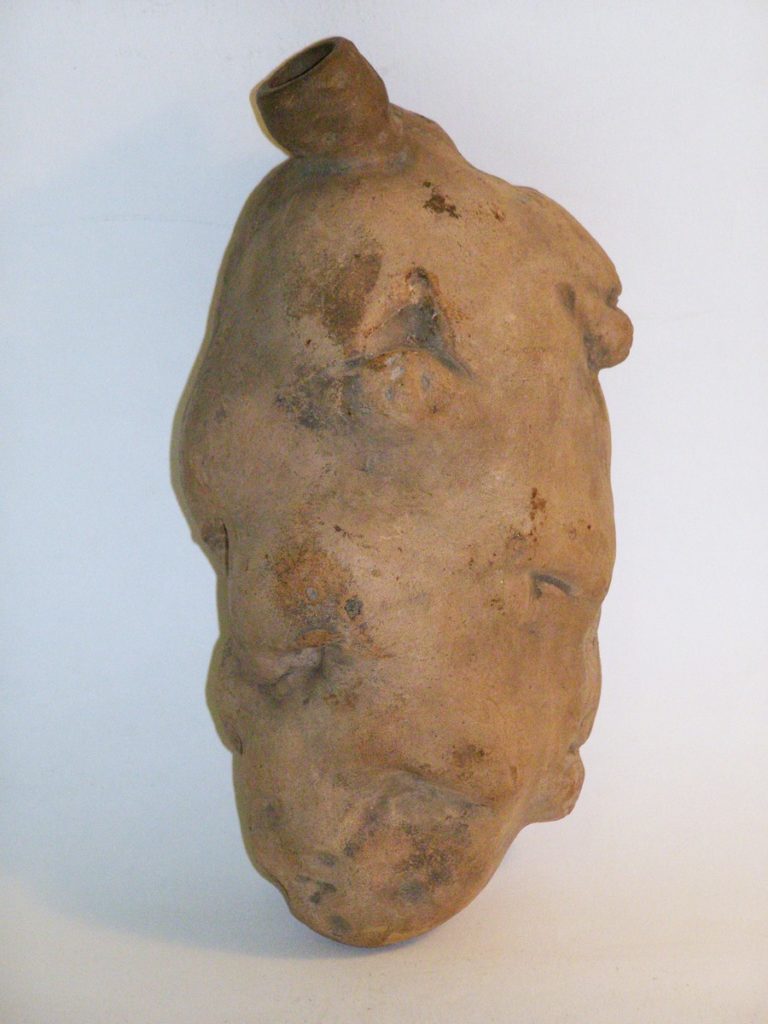





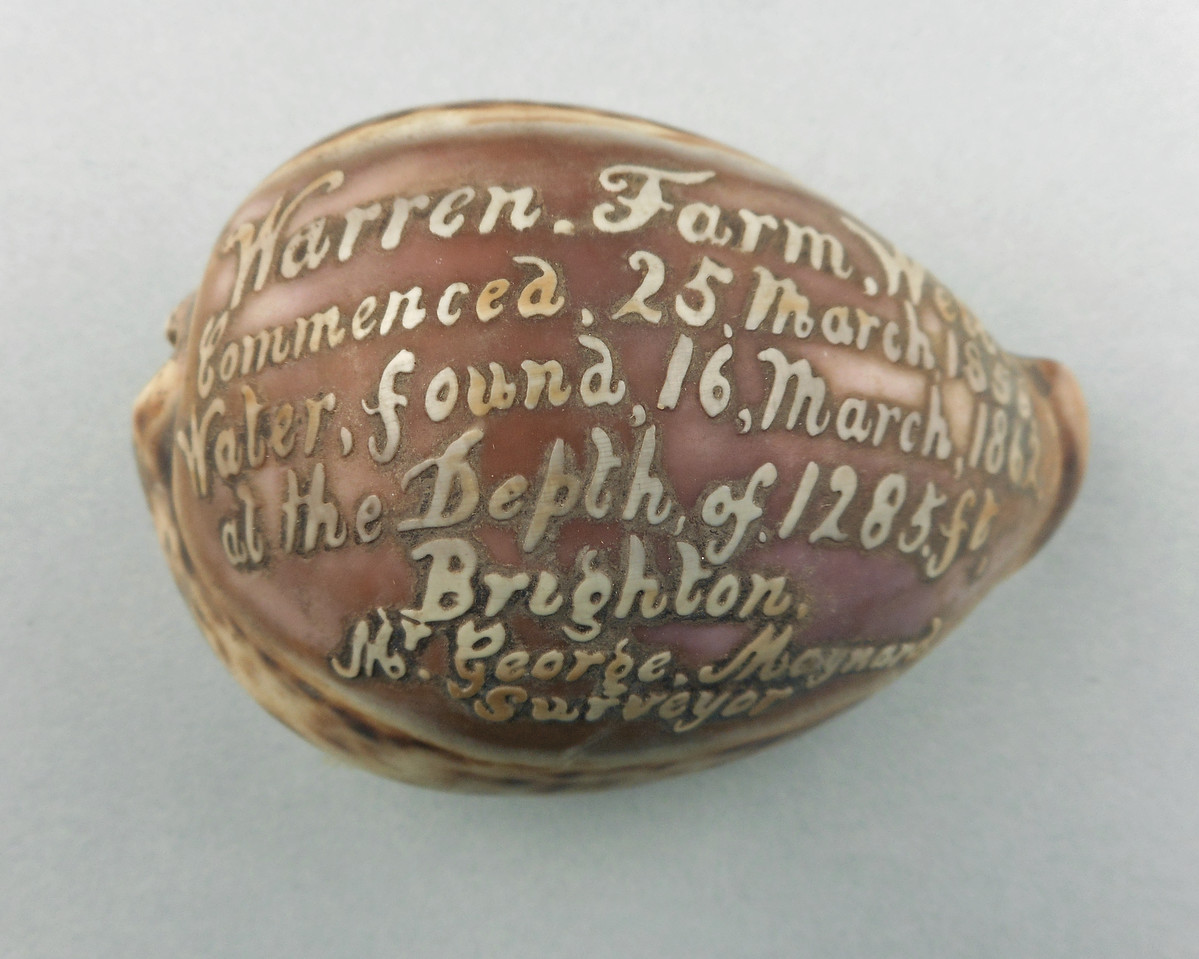
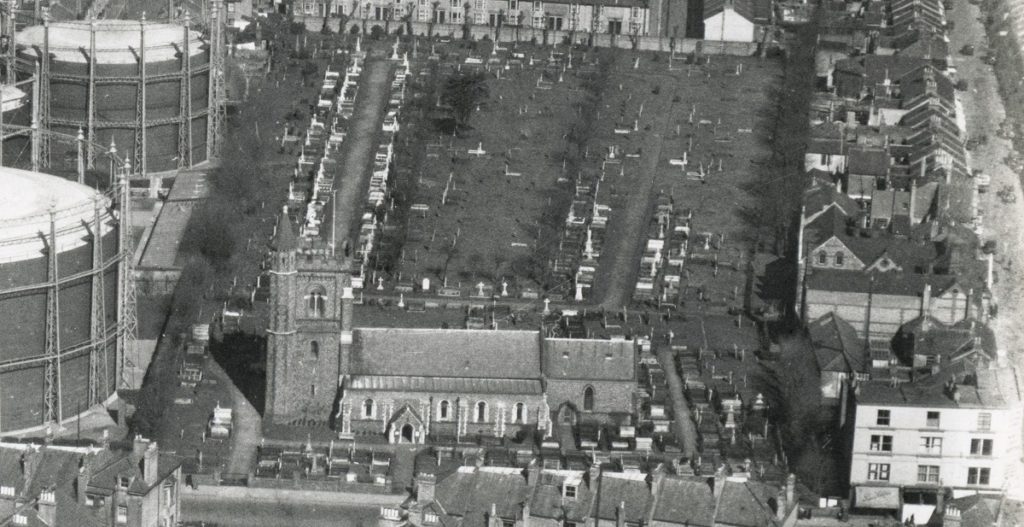









 While leathersmiths like Edwin produce mats, there is still a market for ‘traditional’ looking leather clothing and accessories, which people wear for ceremonies. This image, taken during the team’s visit to Botswana in 2019, shows mass-produced goatskin clothing for sale in Gaborone Market Mall.
While leathersmiths like Edwin produce mats, there is still a market for ‘traditional’ looking leather clothing and accessories, which people wear for ceremonies. This image, taken during the team’s visit to Botswana in 2019, shows mass-produced goatskin clothing for sale in Gaborone Market Mall.


























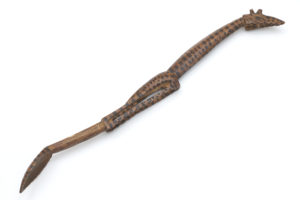






 Khama III, the Kgosi of the Bamangwato, and several neighbouring chiefs, opposed Rhodes’ encroachment onto their territory. In 1895, Khama III, Sebele I and Bathoen I, travelled to England with Reverend Willoughby to ask the British government for protection from Rhodes. Partly as a result of their visit, the northern part of Bechuanaland became a British Protectorate. The B.P. on the bottom of the carved figure’s foot stands for ‘Bechuanaland Protectorate’.
Khama III, the Kgosi of the Bamangwato, and several neighbouring chiefs, opposed Rhodes’ encroachment onto their territory. In 1895, Khama III, Sebele I and Bathoen I, travelled to England with Reverend Willoughby to ask the British government for protection from Rhodes. Partly as a result of their visit, the northern part of Bechuanaland became a British Protectorate. The B.P. on the bottom of the carved figure’s foot stands for ‘Bechuanaland Protectorate’.


